MasterCard vs Visa: Key Differences Explained

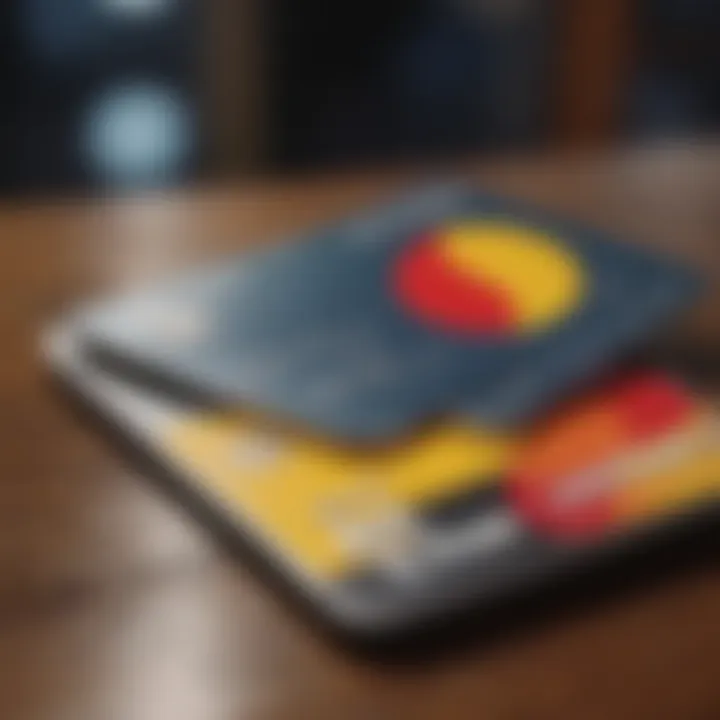
Intro
In a world increasingly driven by digital transactions, understanding the nuances between various payment networks is not just a luxury; it’s a necessity. MasterCard and Visa stand at the forefront of this landscape, shaping how billions of transactions occur daily. Each has its distinctive traits and functions that cater to different users, making it crucial for consumers to educate themselves on the particulars of each card type.
Exploring the key differences can make a significant difference in one’s financial journey—whether it’s choosing the right rewards program or understanding security features. The aim here is to paint a clearer picture of what these two heavyweights offer, so you can approach your spending and saving choices armed with knowledge.
Let’s delve into the ever-evolving world of card payments and unravel the intricacies associated with MasterCard and Visa.
Understanding Personal Finances
Managing personal finances is like tending to a garden; proper care yields beautiful blooms while neglect leads to chaos. Just as you would pull weeds or trim overgrowth, adopting smart budgeting techniques is essential.
Budgeting Techniques
It seems everyone has an opinion when it comes to budgeting. However, sticking to a method that resonates with your spending habits is what counts. For some, a zero-based budget is ideal; every dollar has a job. Others might prefer the 50/30/20 rule, where 50% goes to needs, 30% to wants, and 20% to savings. Each technique possesses its merits and can certainly be adapted to suite your lifestyle.
Tracking Expenses
To effectively manage your finances, keeping an eye on where your money goes is crucial. Whether you're jotting figures down in a notepad or using an app, staying alert to your spending patterns often leads to eye-opening realizations. You might be surprised at how those morning coffee runs add up at the end of the month!
Setting Financial Goals
Without goals, finances can feel like a ship adrift at sea. Setting clear, achievable financial goals gives your efforts purpose and direction. Want to save for a vacation? Or perhaps pay off that nagging credit card debt? Creating SMART goals (Specific, Measurable, Achievable, Relevant, Time-bound) adds clarity and helps keep you on track.
Investing Strategies
Once you’ve got a handle on your personal finances, it’s time to think about investing.
Prologue to Investing
Investing can seem daunting, filled with complex terms and a whirlwind of numbers. At its core, it's about putting your money to work for you over the long haul. The difference between saving and investing is akin to planting a seed versus storing it in a drawer. Both can grow wealth, but the latter does so more effectively over time.
Risk Management
Investing inevitably comes with risks, so understanding how to manage those risks is essential. A savvy investor doesn't just dive head-first into the market; they analyze trends and reevaluate their choices as needed. Consider diversifying your portfolio as a strategy to spread risk—investing in various sectors can help cushion the blow if one area takes a downturn.
Diversification
In the realm of investments, diversification is akin to having multiple streams of income. By not relying on a single type of asset, you create a safety net that can weather market fluctuations. Whether it's stocks, bonds, or real estate, a well-balanced investment strategy can make a world of difference.
Retirement Planning
The prospect of retirement usually brings out a mix of excitement and anxiety. Getting a headstart on retirement planning can put the jitters at bay.
Retirement Savings Plans
Various plans such as 401(k)s, IRAs, and Roth IRAs come into play here. Each has its features, allowing for pre-tax or post-tax contributions, which can significantly benefit your portfolio. Understanding these options can tailor your savings to best suit your future needs.
Social Security Benefits
While not the sole income source during retirement, Social Security can provide essential support. Awareness of your entitlements can help in crafting a more reliable retirement plan. Knowing when to take those benefits—early or at full retirement age—can greatly affect the total amount received, thus influencing your long-term financial stability.
Healthcare Costs
Healthcare costs can add a hefty burden during retirement years, and it’swise to factor them into any retirement plan. From insurance premiums to out-of-pocket expenses, planning for these costs can ensure that your golden years remain just that—golden!
Financial Products Overview
With a firm grasp on personal finances, investing, and retirement planning, let’s explore some essential financial products.
Types of Investment Vehicles
From stocks to mutual funds and ETFs, the variety of investment vehicles can be overwhelming. Each comes with its unique risks and rewards, making it vital to understand the differences before diving in.
Savings Accounts
A savings account is like a rainy-day fund at your local bank. While often not designed for massive growth, it provides liquidity and security, important for unexpected expenses.
Credit Cards and Loans
Credit cards, like MasterCard and Visa, can be powerful tools if used wisely. They offer flexibility and can aid in building credit history, but they can also lead to debt traps. Understanding the nature of these products—along with their advantages and disadvantages—will help ensure you don’t get lost in the credit maze.
Expert Insights and Tips
Engaging with the world of finance can feel overwhelming, but tapping into expert insights can ease that journey!
Financial Advisor Recommendations
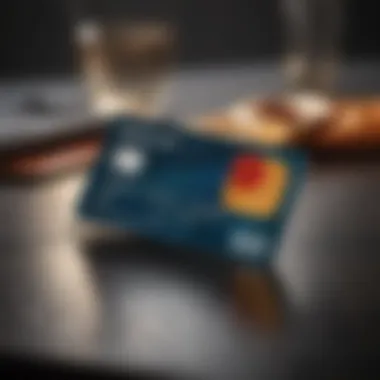
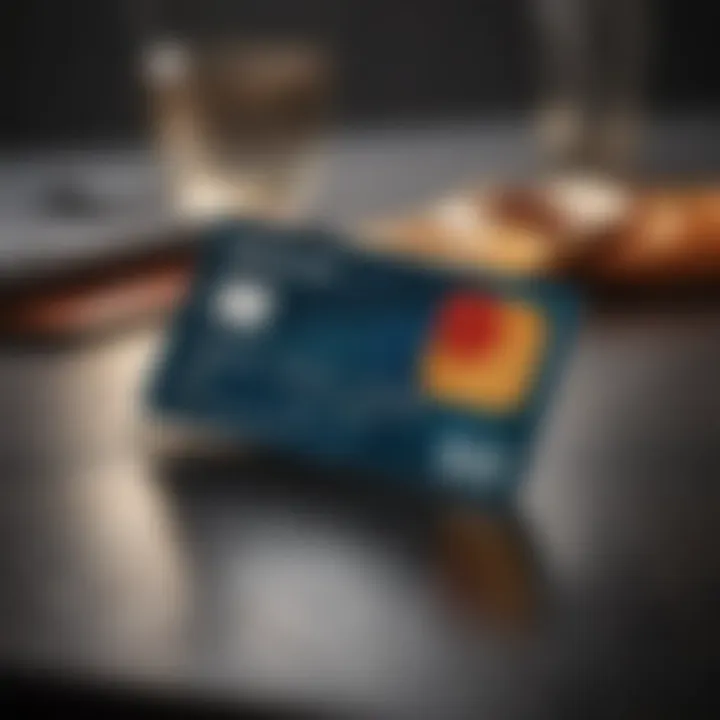
When in doubt, consulting a financial advisor can provide tailored advice for your unique situation. They can offer strategies based on your goals, risk tolerance, and overall financial landscape.
Market Trends Analysis
Keeping abreast of market trends not only informs investment decisions but also enhances your overall financial literacy. Awareness of fluctuations and news that can influence the market is vital in making informed choices.
Tax Planning Strategies
Often overlooked, tax planning is crucial for maximizing your finances. Familiarizing yourself with tax codes can help leverage deductions and credits, ultimately keeping more money in your pocket.
Ultimately, understanding the distinctions between MasterCard and Visa is just one piece of the financial puzzle. By equipping yourself with knowledge of personal finance strategies and products, you navigate your financial journey with confidence.
Prelude to Payment Networks
Understanding payment networks becomes essential, especially when navigating the world of personal finance and credit. Payment networks, like MasterCard and Visa, offer not only a means of transaction but also create a vast ecosystem that facilitates commerce, both in physical stores and online. As the lifeblood of modern financial transactions, these networks establish the vital connection between consumers, merchants, and banks.
Choosing the right payment network can significantly impact your everyday financial activities, from how you make purchases to the rewards you accumulate over time. By exploring the various facets of these networks—acceptance rates, rewards structures, security offerings, and customer service—you’ll be better equipped to select a card that aligns with your spending habits and financial goals.
In this discourse, we will unfold the unique characteristics and functionality of each network to help you make informed choices.
Overview of Payment Networks
In simplest terms, a payment network acts as a middleman between your bank and the merchant, ensuring that transactions proceed smoothly. When you swipe or tap your card, the payment network verifies your account and facilitates the transfer of funds from your account to the merchant's account.
Key Features of Payment Networks:
- Transaction Facilitation: They enable your payment to be processed in real-time, ensuring speed and reliability.
- Acceptance: Widespread merchant acceptance can influence your choice of card, as you’ll want a card that works where you like to shop.
- Rewards and Incentives: Many cards offer cash back, points, or other perks that can enhance your spending experience.
- Security Measures: Each network has its own suite of security protocols to protect your financial information.
"Payment networks are crucial for everyday transactions, serving as the bridge between shopper and seller."
As the market continues to evolve, so do these payment networks, which are constantly seeking to integrate cutting-edge technology to enhance their services. From mobile wallets to contactless payments, understanding how these networks operate is key to optimizing your financial strategies.
MasterCard: Features and Benefits
When discussing payment networks, MasterCard often stands out due to its wide-ranging features and benefits that cater to varied financial needs. Understanding these aspects is essential for anyone stepping into the world of credit and debit cards. It lays a foundation for informed decisions regarding daily transactions, rewards programs, and overall card utility. This section will delve into what makes MasterCard unique, shaping the financial journeys of many individuals.
General Overview of MasterCard
MasterCard, founded in 1966, operates as a prominent global payment network. It allows consumers to make purchases easily, facilitating transactions in millions of locations worldwide. Importantly, it’s more than just a card; it’s a lifeline for travelers, shoppers, and anyone keen on managing their finances efficiently. The flexibility of MasterCard plays a pivotal role in how people shop and spend, with options that suit different lifestyles.
Acceptance and Use
One of the defining strengths of MasterCard lies in its broad acceptance. Retailers, e-commerce sites, and ATM networks widely recognize this card, making it a reliable choice for users. Whether you’re at your favorite grocery store or booking a flight online, the ease of use cannot be overstated. In fact, MasterCard's global market presence means it’s accepted in about 210 countries. This vast acceptance translates into fewer headaches for consumers when traveling or making purchases remotely.
"With MasterCard, the world is truly at your fingertips, making life a bit easier for those on the move."
Furthermore, consumers can utilize MasterCard in comprehensive payment methods, whether tapping the card for contactless payments or entering details during online checkouts. The increased digitization of payment processing alongside the introduction of mobile wallets brings further convenience.
MasterCard Rewards Programs
Rewards programs associated with MasterCard are quite varied, designed to attract and satisfy different consumer groups. These programs can enhance the value of spending by offering cashback, travel perks, or points that redeem for products and services. For instance, MasterCard’s partnership with various airlines or hotels often results in attractive travel rewards, appealing to frequent travelers.
Users should assess which type of rewards align best with their habits. An everyday shopper might gravitate toward cashback options, whereas a jet-setter may find interest in points that can be exchanged for airline tickets. Overall, these rewards programs not only benefit the customer but also encourage loyalty to the MasterCard brand.
Security Features of MasterCard
In today’s world, security can make or break a customer’s choice regarding payment options. MasterCard has invested heavily in robust security features to protect users from fraud and theft. One standout example is the use of the EMV chip technology, which enhances card security during transactions.
Additionally, MasterCard offers tools such as account alerts, which notify users of unusual activities in real-time. Consumers also benefit from the zero-liability policy; if fraud occurs, they won’t be held responsible for unauthorized charges. These security protocols are crucial, fostering a sense of trust and safety for users.
In a nutshell, MasterCard isn’t just about facilitating payments; it offers a comprehensive suite of features and benefits that cater to various consumer needs, combining convenience, rewards, and security.
Visa: Features and Benefits
Understanding Visa's features and benefits is key when navigating the world of payment networks. This section brings to light the distinctive characteristics that set Visa apart from its competitors and explains why it remains a preferred choice among users. From its acceptance levels to security protocols, knowing these details equips cardholders with the necessary insights to maximize their payment experiences.
General Overview of Visa
Visa, one of the leading payment networks worldwide, has built a robust infrastructure that underpins both consumer trust and transaction efficiency. Founded in 1958, the company has consistently evolved to meet the demands of a dynamic marketplace. With its trademark blue, gold, and white logo, Visa represents reliability and global reach. It is widely accepted across more than 200 countries, making it a go-to option for international purchases as well as local transactions.
Visa cards typically fall into several categories, including credit, debit, and prepaid options. This versatility meets the needs of various consumers, whether they prefer to spend within their means or enjoy the convenience of rolling over balances. Overall, Visa’s reputation is built on a solid foundation that fosters easy access to funds and widespread recognition, which contributes immensely to its popularity among individuals and businesses alike.
Acceptance and Use
The acceptance of Visa in merchants is astounding. Almost every corner store, restaurant, and e-commerce site prompts their customers with a Visa option. This broad acceptance minimizes the hassle of carrying cash, making payment straightforward and swift. In a survey conducted by the Nilson Report, it was found that 70% of all global card transactions were done using Visa. So, for anyone wanting to avoid the frustration of incorrectly assuming a card was accepted only to find otherwise, Visa stands out as a safe bet.
In addition to brick-and-mortar establishments, Visa thrives in the online shopping arena. Its ability to integrate with various mobile wallets and payment apps ensures that users can transact fearlessly in cyberspace, knowing they can easily leverage their Visa cards for purchases ranging from groceries to luxury goods.
Visa Rewards Programs


Visa offers a variety of rewards programs that enhance the cardholder experience, allowing users to benefit from their spending habits. From cashback offers to travel rewards, Visa provides cardholders with the opportunity to gain more value from their purchases. The specifics can vary widely by issuing bank, but Visa often collaborates with these banks to offer enticing incentives that cater to a range of interests.
Some of the prominent benefits include:
- Cashback on Everyday Purchases: Many Visa cards offer a percentage back on typical expenses such as groceries and fuel. This can add up quickly, rewarding the user for day-to-day activities.
- Travel Perks: For avid travelers, Visa has partnerships with airlines and hotel chains that allow points and miles to accumulate, providing benefits like free flights or hotel stays.
- Shopping Safeguards: Some programs provide additional benefits like extended warranties on purchases or return protection, making spending less risky.
Security Features of Visa
Security is paramount in today’s digital age, and Visa takes this responsibility seriously. The company employs advanced security measures to safeguard transactions and tackle fraud effectively. Here are some key features:
- Zero Liability Policy: This means cardholders are not held responsible for unauthorized transactions, provided they report any suspicious activity promptly.
- Chip Technology: Visa cards come equipped with EMV chip technology that enhances security during in-person transactions, making it harder for fraudsters to replicate cards.
- Fraud Monitoring: Visa's sophisticated algorithms monitor purchases in real-time, making them adept at spotting unusual spending patterns. If a suspicious transaction is detected, users might receive alerts or temporary holds.
Key Differences Between MasterCard and Visa
Understanding the distinctions between MasterCard and Visa is essential for anyone delving into the world of payment networks. These two giants dominate the financial landscape, and opting for one over the other could influence your purchasing experience significantly. When you use these cards, you're not merely swiping for your morning coffee; you’re engaging with vast infrastructures that cater to billions of transactions daily. This section aims to highlight critical elements that differentiate these payment methods in areas crucial for informed decision-making.
Acceptance Rates in Various Regions
One prominent difference lies in the acceptance rates of MasterCard and Visa across diverse geographical regions. In certain countries, such as the United States and Canada, both networks boast high acceptance levels, nearly matching each other’s numbers. However, when looking closely, MasterCard tends to hold a slight edge in acceptance in specific sectors, like luxury retail or international travel agencies. Conversely, Visa might be more prevalent in local diners or smaller businesses due to its historical presence in those markets.
Moreover, the international aspect can’t be ignored. MasterCard has made aggressive inroads in Asia, where emerging markets are undergoing rapid transitions, leading to higher implementation rates than its counterpart. Travelers often benefit from checking which card might provide better acceptance where they’re headed.
"The best choice often depends on where you plan to use your card. Never assume one brand is universally better."
Rewards and Loyalty Programs
Rewards and loyalty programs are another area where MasterCard and Visa diverge. Both offer enticing benefits, yet their structures can be quite different. Visa generally focuses on point-based systems, rewarding consumers for everyday purchases. For instance, some Visa cards allow users to earn double points on dining or travel expenses.
On the flip side, MasterCard offers varied rewards programs, some of which cater specifically to niche markets. These include travel perks that might offer complimentary lounge access or insurance protection while on the road. This tailored approach often makes MasterCard more appealing for frequent fliers or those who love adventure.
Here's a breakdown of the kinds of rewards typically associated with each:
- MasterCard:
- Visa:
- Travel perks (like upgrades)
- Enhanced Cashback on certain categories
- Exclusive event invites
- Point accumulation for every dollar spent
- Loyalty partnerships with major retailers
Ultimately, the best choice may depend on your individual spending trends and opportunities to leverage the rewards.
Security and Fraud Protection
Security features are paramount in today’s world, and both MasterCard and Visa have invested heavily in fraud protection. However, differences exist in their methodologies. MasterCard leverages its security protocols with a focus on its unique system called Identity Theft Protection, which monitors your accounts for suspicious activity. On the other hand, Visa offers its Zero Liability Policy, which guarantees you won't be held responsible for unauthorized transactions.
For extra peace of mind, both networks deploy advanced encryption and chip technology, yet MasterCard’s latest updates in biometric security are worth noting. By integrating fingerprint and facial recognition technologies for online payments, it seeks to remain a step ahead in protecting cardholders.
Customer Service and Support
Customer service can often be a determining factor when choosing between MasterCard and Visa. Both offer extensive support systems, but their approaches can vary. Visa’s customer service is broadly recognized for being efficient, equipped with a well-structured online help center, and providing assistance via phone or chat. Many users find that help is readily available, often without long wait times.
MasterCard, while also offering reliable support, sometimes offers a more personalized experience tailored to its rewards members. Certain premium cardholders can expect dedicated account managers who can provide direct assistance tailored to their unique needs. Additionally, both platforms encourage users to leverage their online resources, where they can manage their accounts, report issues, and track spending.
Considerations for Choosing Between MasterCard and Visa
Choosing between a MasterCard and a Visa isn’t just like picking apples or oranges; it carries weighty implications for everyday transactions and broader financial health. To navigate this decision, one must look beyond the surface features of each card. An understanding of personal finances, reward systems, and security essentials can significantly enhance your financial savvy. Knowing how these cards align with your lifestyle is key.
Assessing Personal Spending Habits
Money management begins with a thorough assessment of your spending habits. Think about your daily purchases, whether they’re big-ticket items or small indulgences, and how often you swipe your card. This insight helps in determining which card might work best for you.
For instance, if you travel frequently, a card that offers rewards in the form of airline miles or travel discounts might be appealing. MasterCard, for example, often has partnerships with travel-related services. On the other hand, if your expenses comprise mostly groceries and dining, you might want a rewards program that maximizes those categories. Understanding the nuances allows you to make the right choice that aligns with your spending patterns.
Evaluating the Importance of Rewards
Rewards programs can be a game changer in choosing your card. These programs do more than just offer cashback; they open avenues for travel perks, shopping discounts, and exclusive experiences. As you evaluate your options, consider how much you could benefit from these incentives.
For example:
- A MasterCard linked to a robust cashback program may provide significant savings for everyday purchases.
- On the flip side, a Visa card with points accumulating from certain partners could grant you access to concerts, events, or even experiences not readily available otherwise.
Finding a rewards structure that resonates with you is crucial. Ask yourself how often you will utilize these rewards and how they align with both your interests and spending.
Understanding Security Needs
In today’s digital world, security should never be an afterthought. Each card brand carries unique security features that cater to various consumer needs. MasterCard and Visa both offer fraud protection, but there are differences in how they implement security measures.
For instance, Visa’s Zero Liability policy means that cardholders aren’t held responsible for unauthorized charges, giving a sense of relief. Meanwhile, MasterCard employs advanced security technology known as SecureCode, allowing cardholders to set up stronger authentication methods for online transactions.
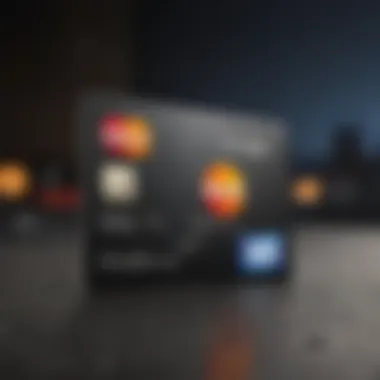
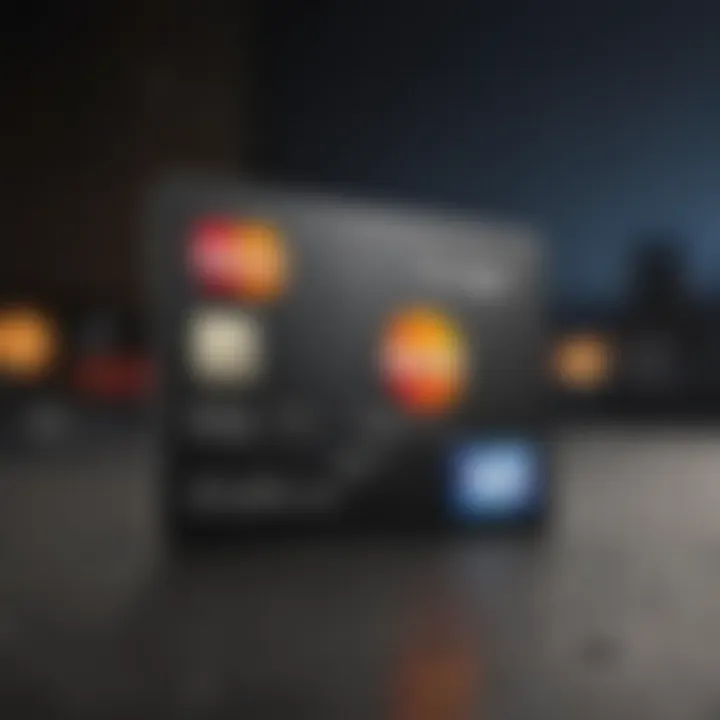
As you ponder your options, think about your comfort level with online transactions and fraud risk, the measures each card offers, and how they correspond with your peace of mind.
“Security isn’t just about barriers; it’s about finding balance between convenience and protection.”
Global Acceptance of MasterCard and Visa
Understanding the global acceptance of MasterCard and Visa is crucial for anyone considering which card to use for their financial transactions. A card's acceptance directly affects its utility, especially when traveling abroad or making online purchases from international retailers. MasterCard and Visa have established vast networks that facilitate payments across many countries and regions, providing diverse options for consumers.
While both payment giants have broad footprints, their networks may differ in various locales. Oftentimes, in some regions, MasterCard may be accepted at specific merchants while Visa might not, or vice versa. Being aware of these disparities can save cardholders from the frustration of carrying a card that isn't accepted where they want to make purchases.
Market Penetration and Availability
Market penetration is a vital factor when discerning credit card options. MasterCard and Visa dominate the payment landscape, but there are nuances worth noting:
- Geographical Reach: Visa generally leads in many markets in terms of sheer volume. However, in certain areas, particularly in emerging markets, MasterCard has gained significant ground and offers competitive acceptance rates.
- Merchant Partnerships: Both networks boast millions of merchant partners worldwide. That said, differences in partnerships can effectivly determine your experience. For example, specific retailers might favor one network over another, which could influence your choice based on your spending habits.
- Local Financial Institutions: The availability of MasterCard and Visa cards can also depend on local banks and financial institutions. Some banks might issue only Visa cards, while others may focus on MasterCard offerings. This can affect which cards you have access to based on your geographic location.
An important point to consider is that recent trends show that e-commerce businesses increasingly embrace both MasterCard and Visa due to their robust security features and customer trust. Thus, as online shopping grows, so do the opportunities for cardholders from both networks.
"Visa and MasterCard are like two peas in a pod, yet where they're planted matters significantly for consumers."
In summary, when choosing between MasterCard and Visa, examine the networks' market penetration in your region and among your desired merchants. This research could make a world of difference when it comes to utilizing your card effectively. Always remember, the choice of card can impact not just where you shop, but how smoothly your transactions proceed.
Technological Innovations in Payment Processing
In the swiftly evolving world of finance, technological innovations play a critical role in shaping the way consumers manage their money. Particularly, when it comes to payment networks like MasterCard and Visa, keeping pace with the latest advancements is no trivial feat. This section will highlight how these technologies transform traditional payment methods into seamless, secure, and versatile transaction tools, offering different benefits for users.
From enhanced security features to the convenience of digital wallets, understanding the impacts of these innovations can help consumers make informed choices.
Contactless Payments and Mobile Wallets
A major shift in how people transact is the rise of contactless payments and mobile wallets. These innovations permit users to make purchases without physically handing over their cards. You just wave your card or phone at a reader, and – voilà! – the payment is processed. This technology relies on NFC (Near Field Communication) that allows devices to communicate wirelessly over short distances. The ease and rapidity of such transactions suit the pace of modern life, especially for the busy professionals.
Another noteworthy aspect is mobile wallets like Apple Pay and Google Pay. These platforms enable customers to store multiple payment options securely on their smartphones. Consequently, users can manage different cards while enjoying added layers of security, like tokenization, which masks sensitive data during transactions. This means even if data got intercepted, it wouldn’t be useful to anyone unauthorized.
- Benefits of Contactless Payments:
- Speed and Convenience: Tap and go saves time at checkout, beneficial in crowded places.
- Security: Less physical handling of cards reduces exposure to theft.
- Hygienic: Particularly relevant during times when health concerns rise, limiting touch is favorable.
Adopting these technologies is not without considerations, though. For instance, consumers need to ensure their mobile devices and cards are updated with current security features, preventing unauthorized access. Additionally, some vendors may not yet support contactless payments, which can be an obstacle in certain situations.
As the landscape continues to adapt, staying abreast of technological innovations in payment processing will be paramount, ensuring that both MasterCard and Visa remain relevant in a competitive marketplace. Understanding these features gives consumers an edge, enabling them to select the payment method that aligns best with their lifestyles.
"The future of payments is not just about ease and efficiency; it’s about harmonizing security with convenience."
The Role of MasterCard and Visa in E-Commerce
In today’s digital landscape, where shopping can happen with just a few clicks, the role of payment networks like MasterCard and Visa is more critical than ever. E-commerce has revolutionized the way we buy goods and services, and a large piece of this transformation is attributed to these two payment giants.
Both MasterCard and Visa provide a seamless interface for transactions, which is essential for both consumers and businesses. With features designed to enhance security, increase convenience, and support various payment methods, they have become indispensable in online transactions.
Trends in Online Payments
The online payments scene is constantly evolving. Here are some key trends shaping the way MasterCard and Visa are influencing e-commerce:
- Shift to Mobile Payments: More consumers are using smartphones to make purchases. MasterCard and Visa have adapted by investing in mobile payment technologies, allowing users to pay via apps and digital wallets. This shift has revolutionized convenience, enabling payments on-the-go without the hassle of physical cards.
- Integration with E-Commerce Platforms: Many e-commerce platforms, such as Shopify and WooCommerce, have integrated MasterCard and Visa payment options. This allows businesses to offer clients an easy and familiar way to shop without jumping through hoops. The integration is often user-friendly, creating a frictionless experience for consumers.
- Increased Security Measures: As the e-commerce realm grows, so do concerns about fraud and security. In response, both networks have ramped up their security protocols. Features like tokenization and encryption help protect sensitive data, giving consumers confidence when completing a transaction online.
- Adoption of Contactless Payment Methods: Even in e-commerce, contactless payments are rising in popularity. MasterCard and Visa have rolled out features that enable users to complete transactions quickly and securely without typing card details. This trend emphasizes speed and efficiency in an increasingly impatient market.
- Global Market Expansion: The global e-commerce market continues to flourish. MasterCard and Visa have been proactive in expanding their reach to emerging markets. Their efforts in these regions not only enhance economic growth but also increase their acceptance rates globally, making online shopping more accessible for everyone.
Ultimately, the role of MasterCard and Visa in e-commerce reflects a broader trend: the need for efficient, secure, and user-friendly payment options. As technology continues to innovate, so will the solutions these payment networks provide, shaping the future of online shopping.
"In a world more interconnected than ever, MasterCard and Visa are at the forefront, ensuring that the pulse of e-commerce beats smoothly."
In summary, understanding how MasterCard and Visa facilitate e-commerce is crucial for anyone involved in shopping or selling online. Whether it’s leveraging mobile technology or ensuring transaction safety, their impact is undeniable.
Epilogue
In today's fast-paced financial landscape, understanding the nuances between MasterCard and Visa is crucial for anyone navigating their spending habits and payment options. As prominent players in the payment network arena, both brands offer distinct features that cater to varying consumer needs.
A core consideration is acceptance - knowing where each card is honored is essential. With a more extensive global reach, certain regions may favor one over the other, impacting day-to-day transactions. Additionally, both companies boast rewards programs that are tailored to specific lifestyles. For instance, the avid traveler might research which card yields more points for flights or hotel stays, while a frequent grocery shopper may prioritize the cashback benefits offered by one card over the other.
Security is yet another significant element. Both MasterCard and Visa invest heavily in fraud protection technologies, but the extent of their coverage and customer support services can lead to a difference in peace of mind for some cardholders.
Thus, when choosing a card, it isn’t merely about the superficial features, but rather about aligning the functionality of the card with your individual financial habits and future goals. When considering which network to opt for, it's vital to weigh personal priorities like reward programs, security needs, and geographical acceptance.
Ultimately, the decision is unique for each person; what benefits one might not benefit another. Careful consideration can make a world of difference in choosing a card that truly complements one’s lifestyle.
"A well-informed choice can turn a simple transaction into an opportunity for financial growth."
Final Thoughts on Choosing a Card
If nothing else, the landscape of credit and debit options provided by MasterCard and Visa serves as a reminder of the importance of making informed choices. Each card possesses its own strengths and weaknesses. For some, the perks of a specific rewards program might shine brightly, while for others, the shadow cast by fees or limited acceptance might deter them entirely.
Here are some points to ponder:
- Personal Spending Habits: Reflect on how you typically use your card. Are you a frequent traveler? Do you shop more at restaurants or retail?
- Rewards Preference: Think about what type of rewards excite you - cash back, travel points, or perhaps even exclusive offers?
- Security Features: Evaluate your concerns regarding security; is identity theft a big worry for you?
- Customer Service: Research how responsive each company is; sometimes it matters who’s on the other end of the line when issues arise.
Ultimately, the journey to finding the right card is as unique as each individual. Taking time to assess criteria that resonate with personal or financial values can inspire a choice that leads to both practical use and a sense of satisfaction.







